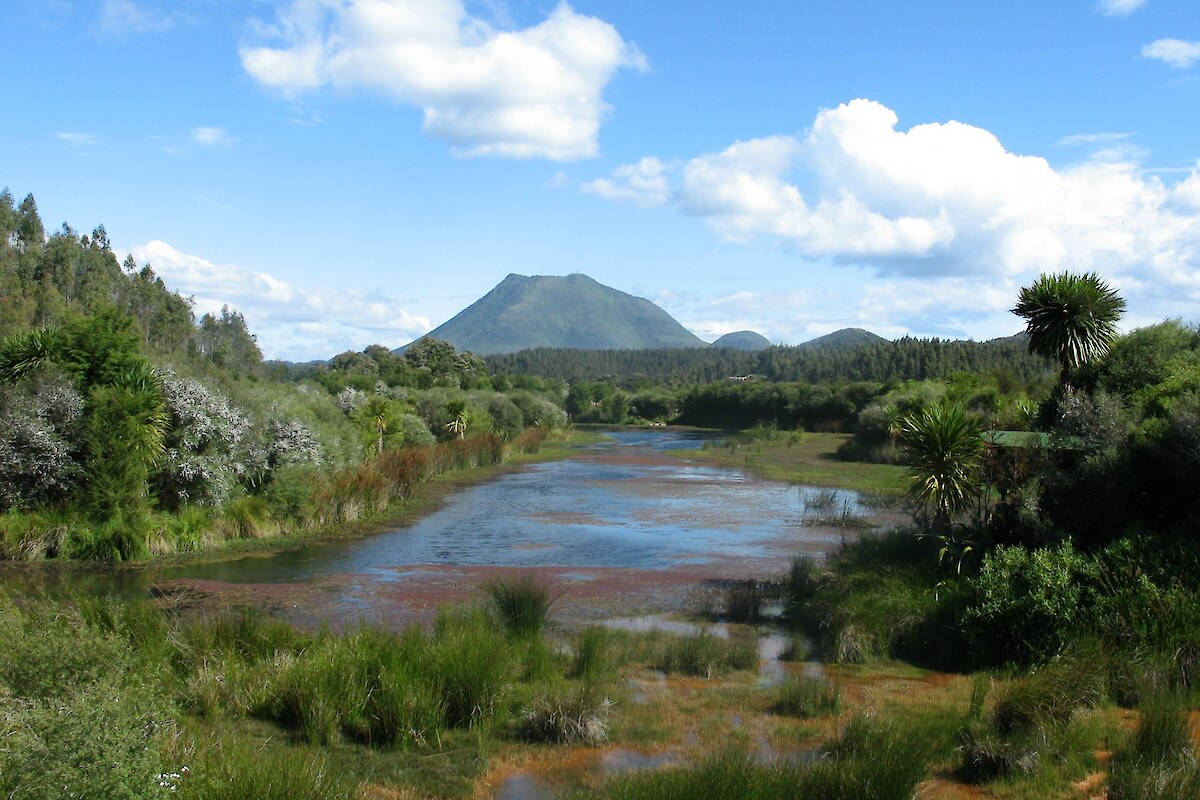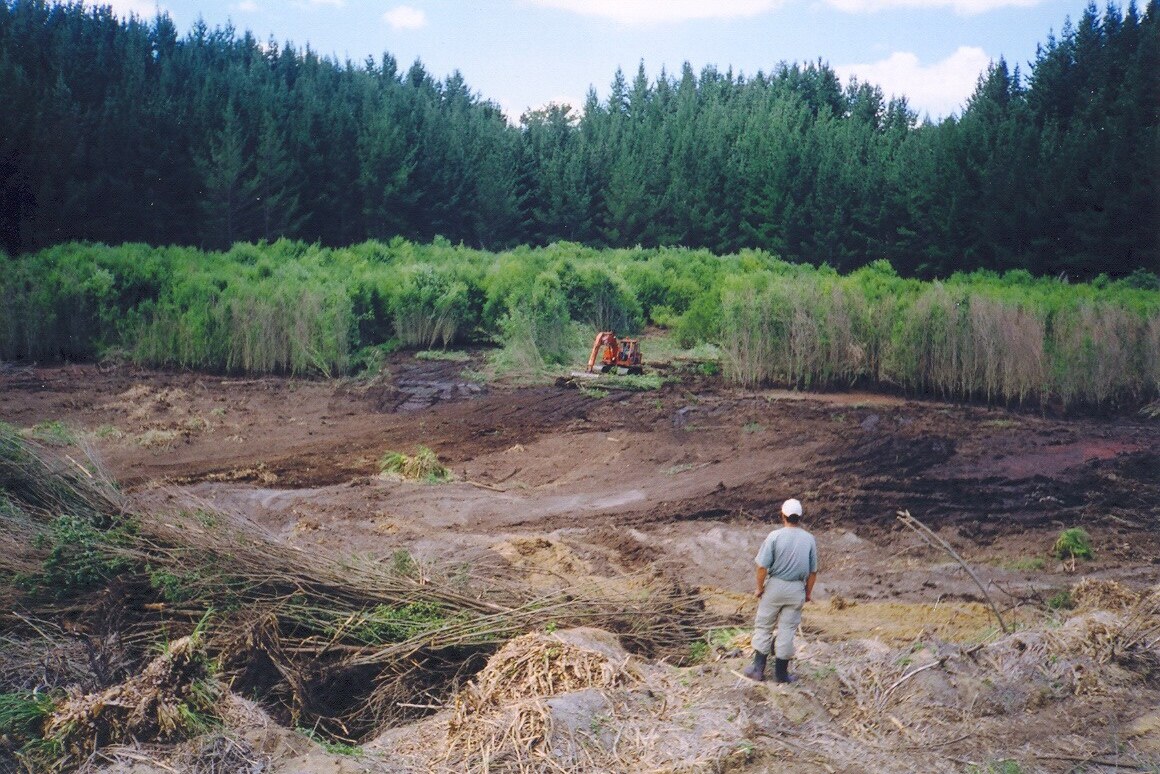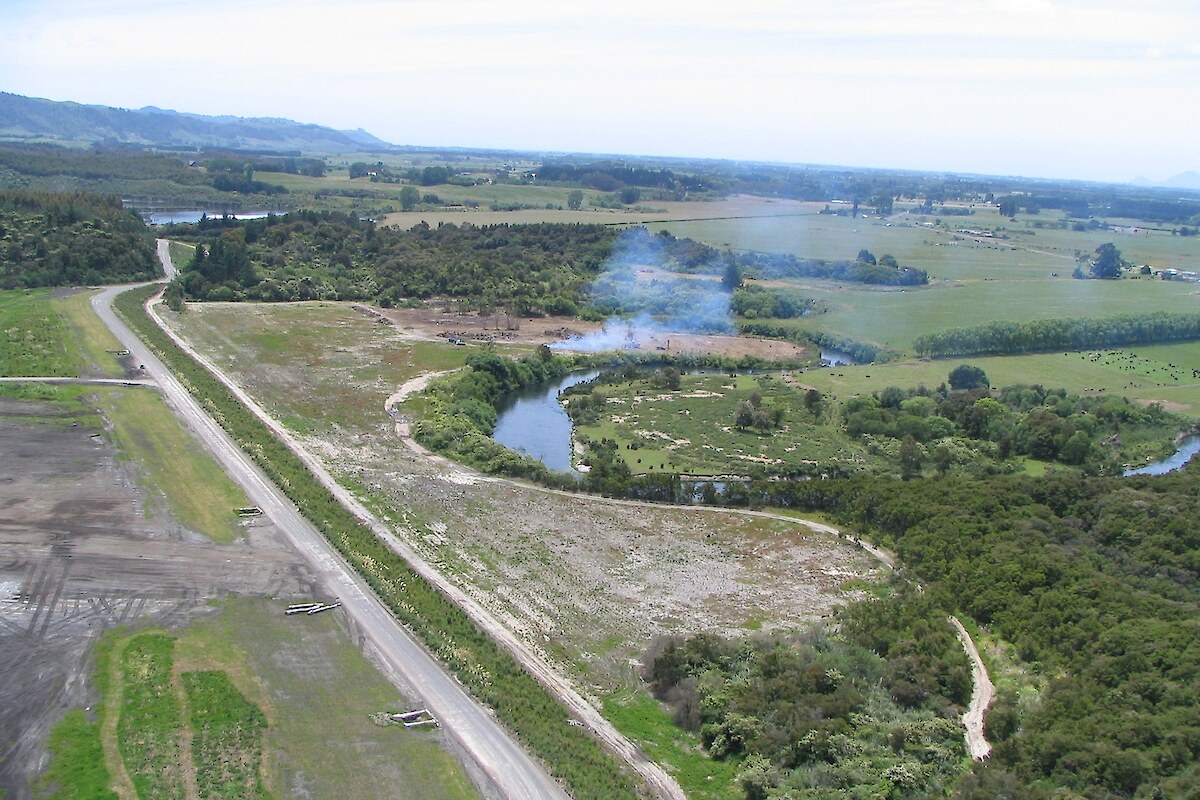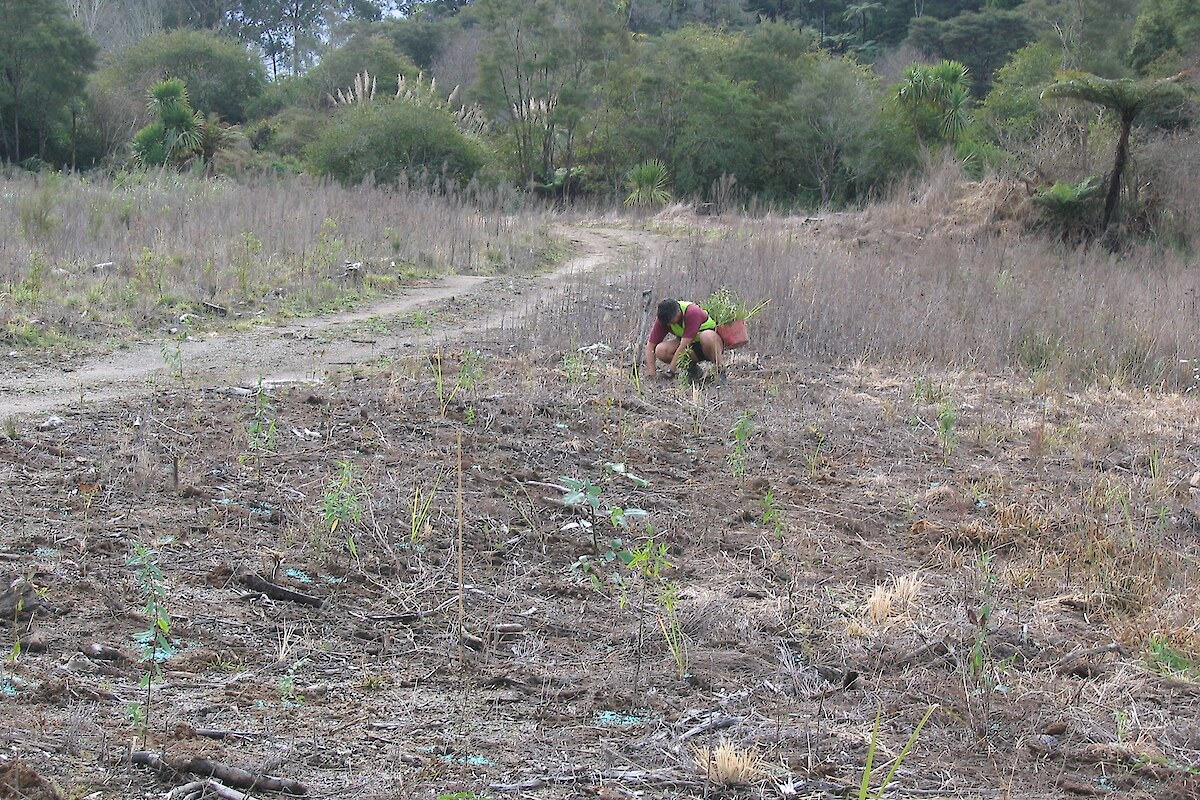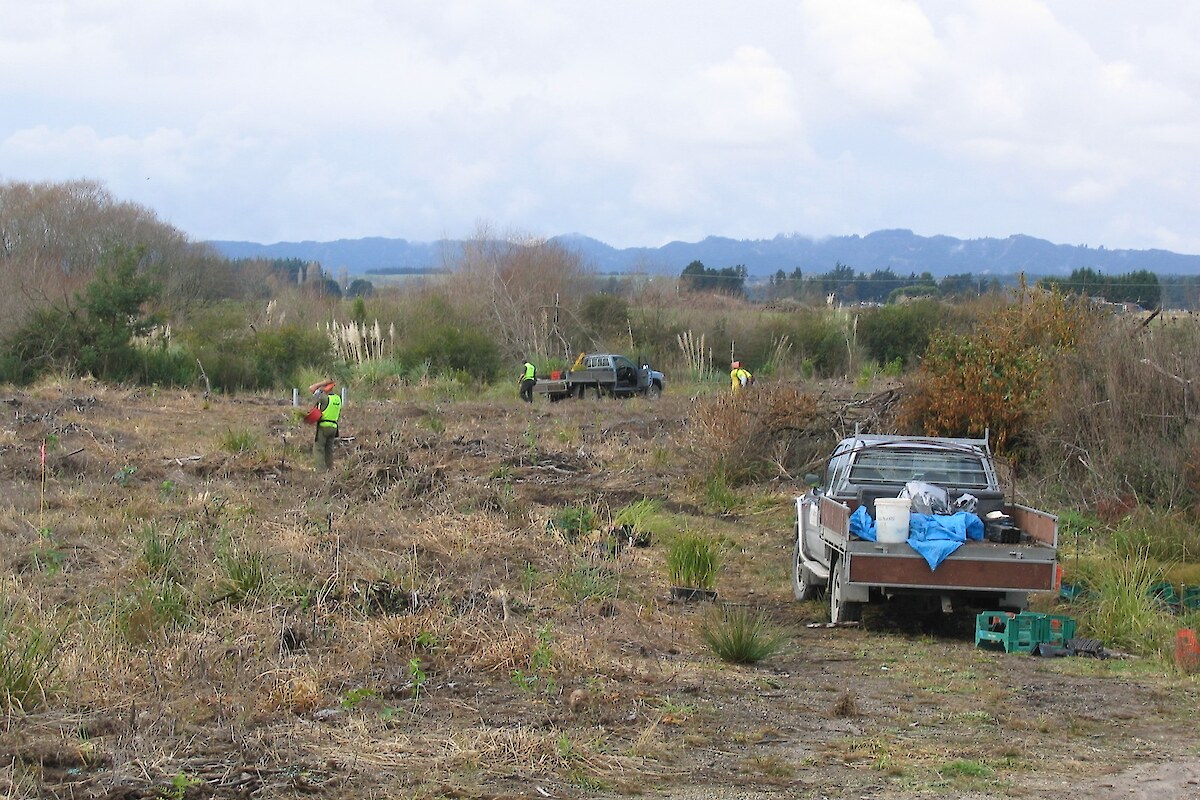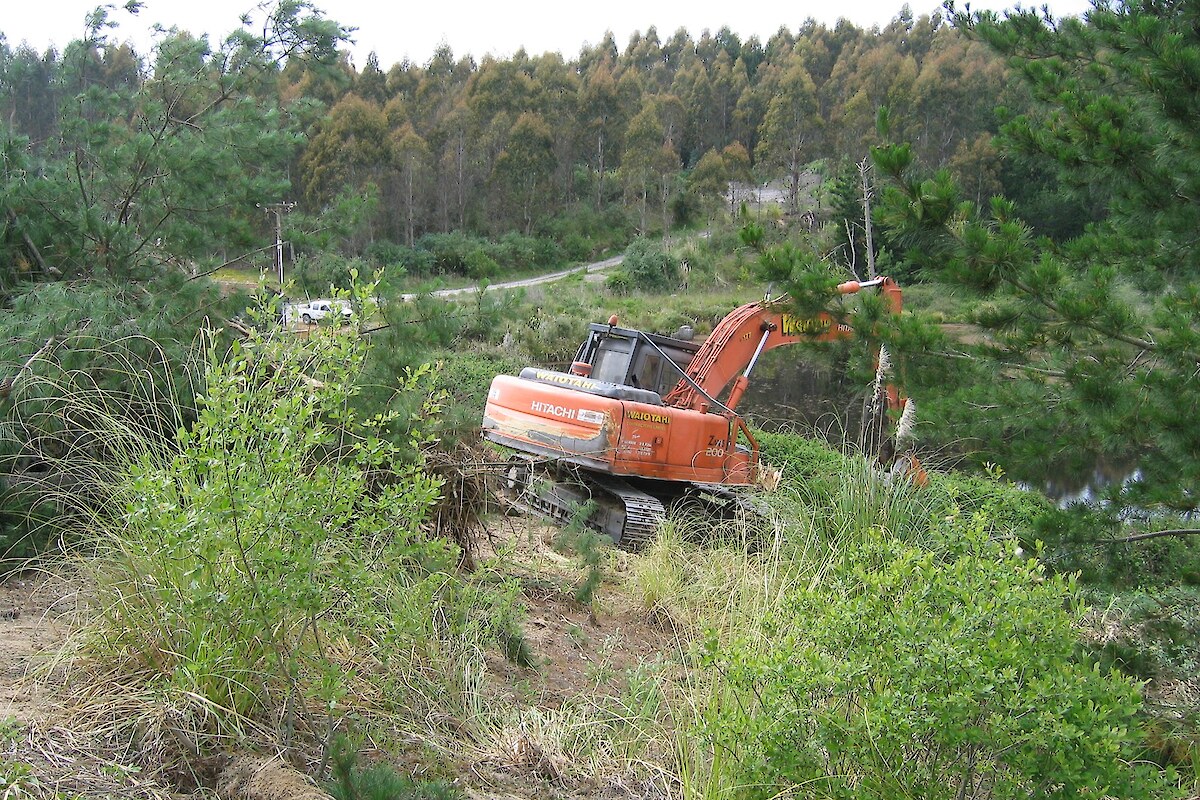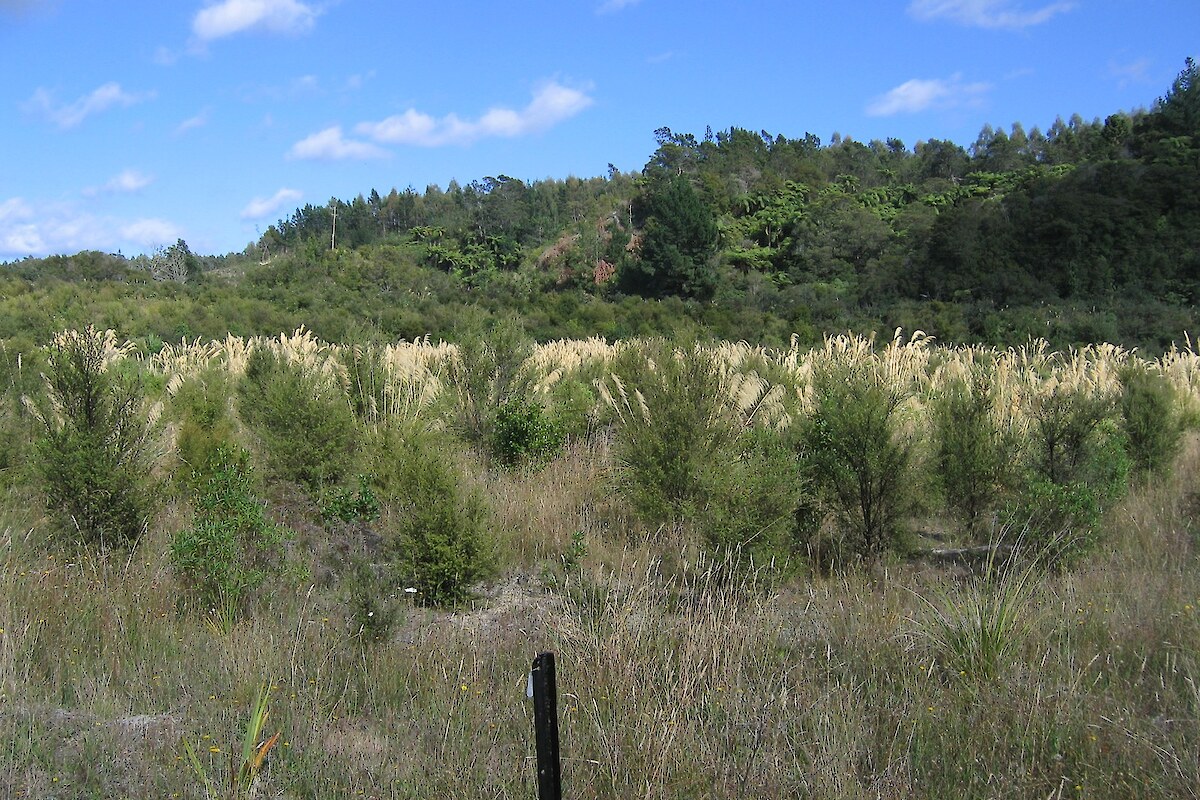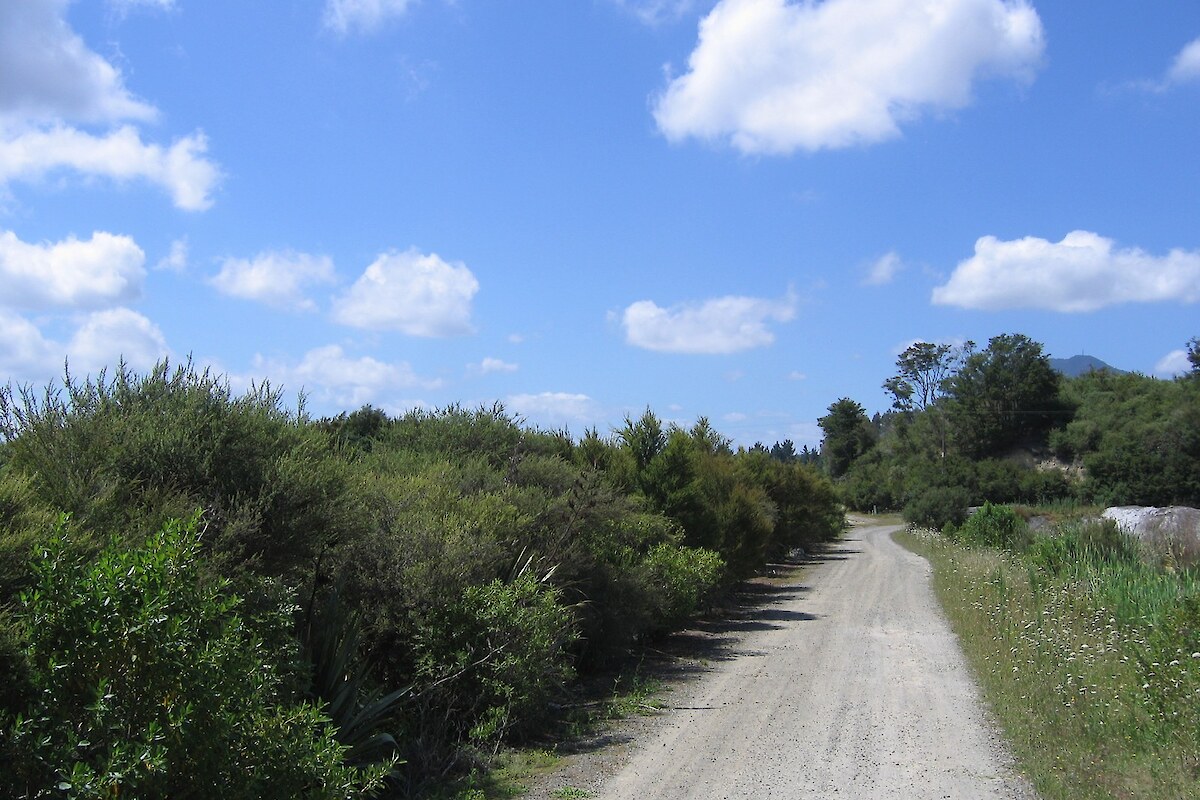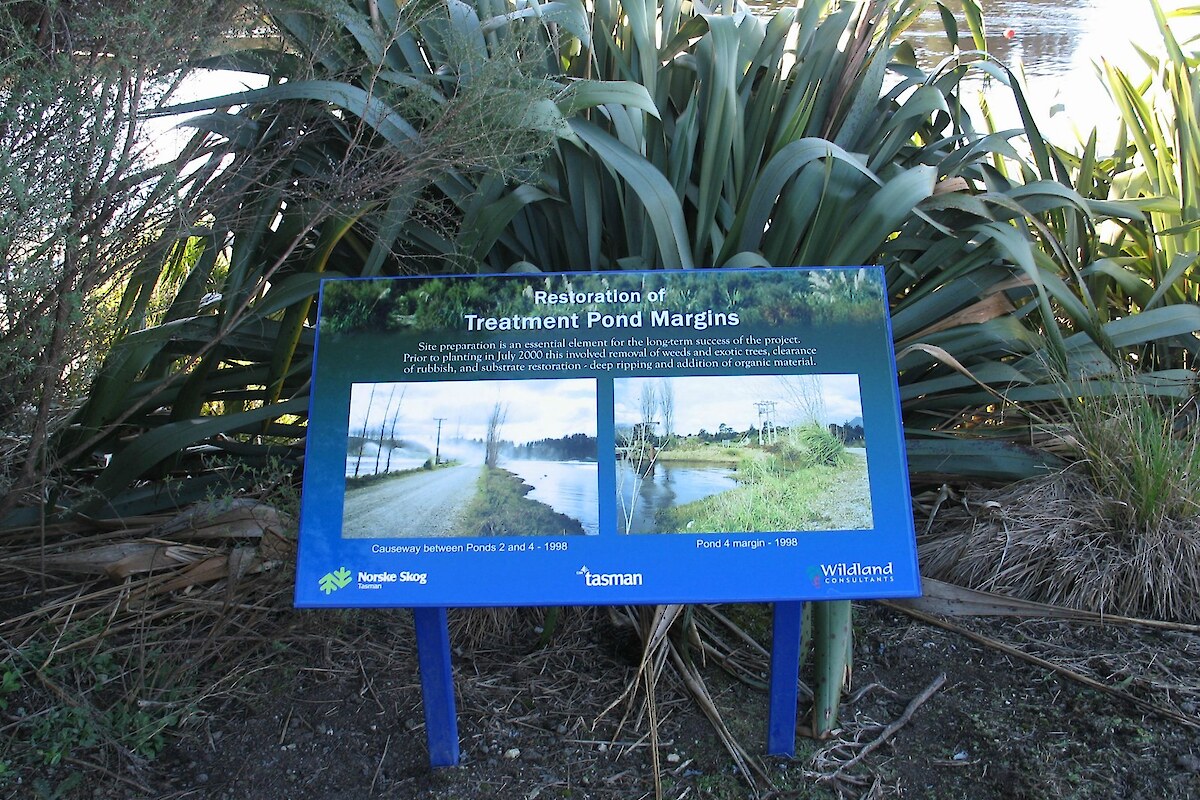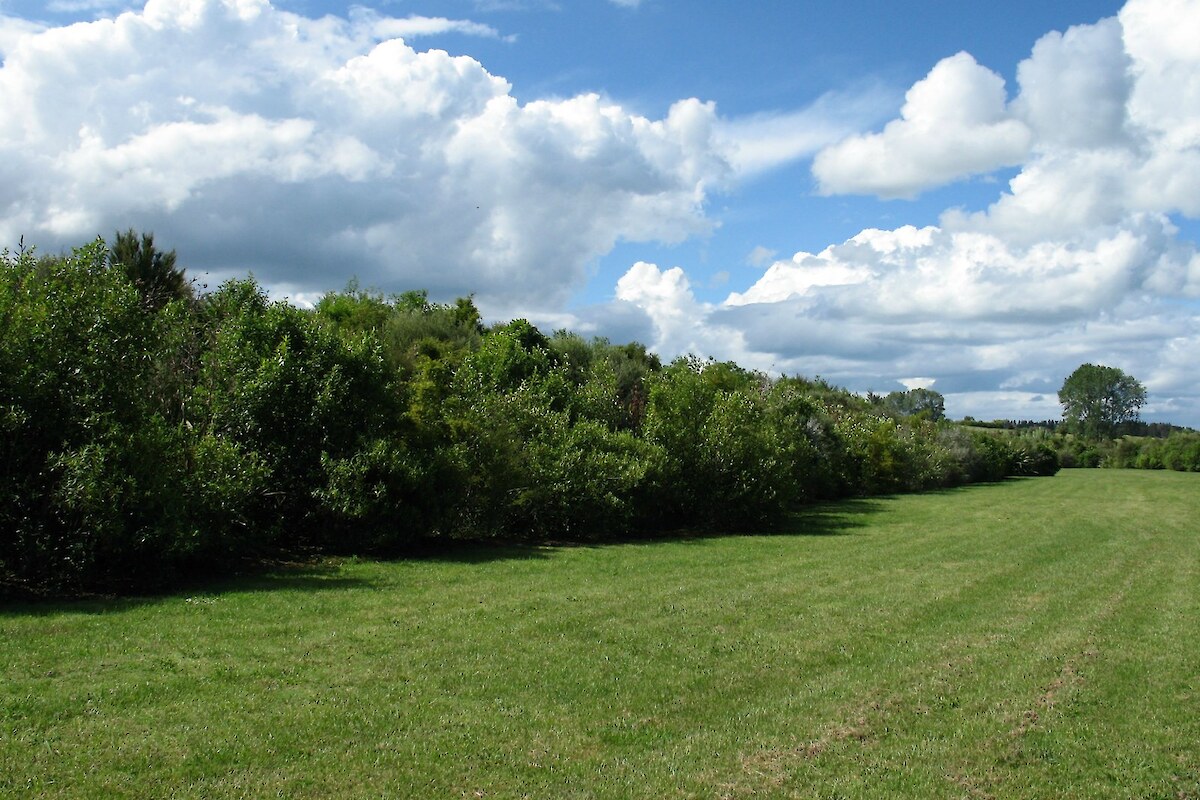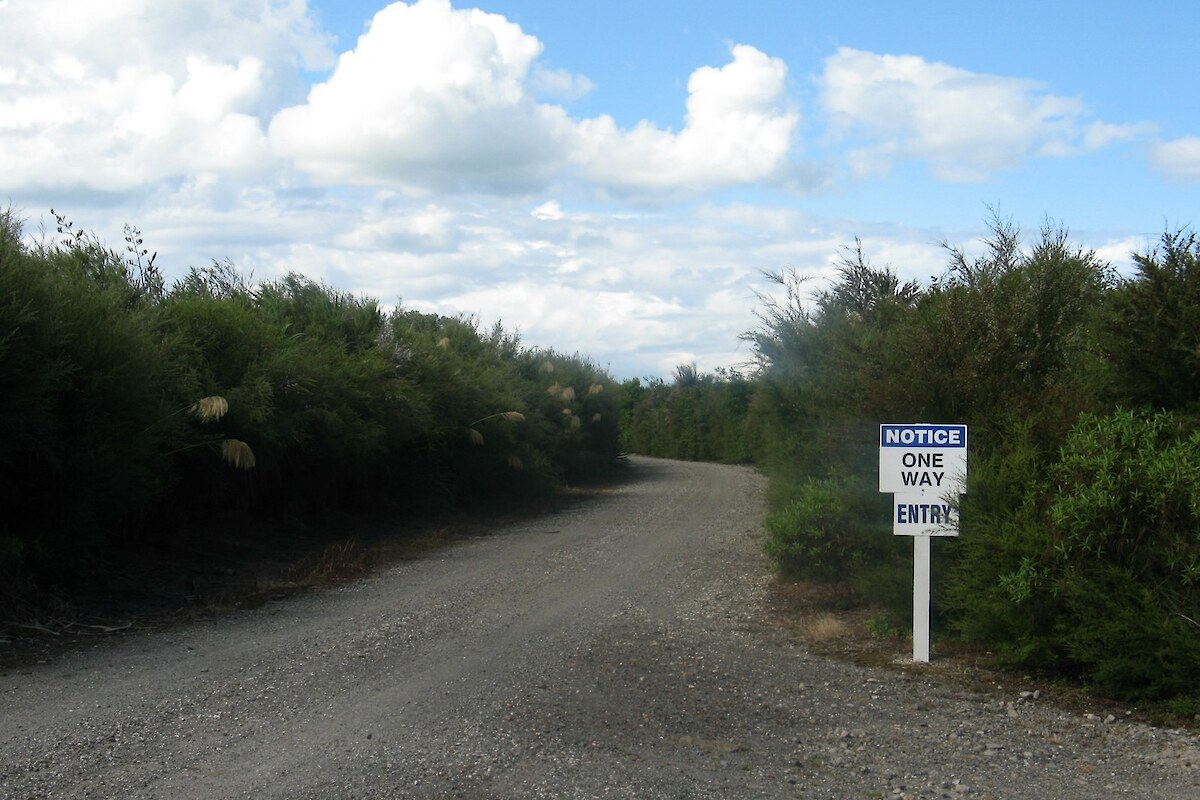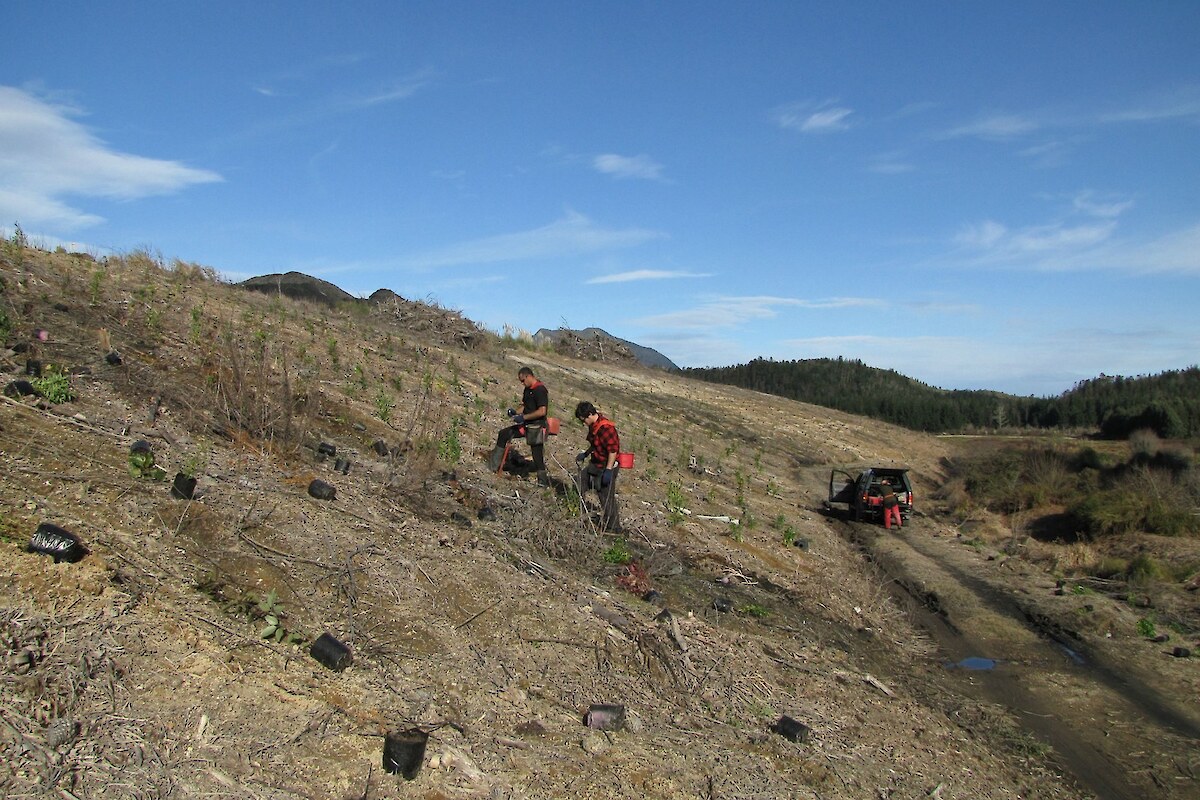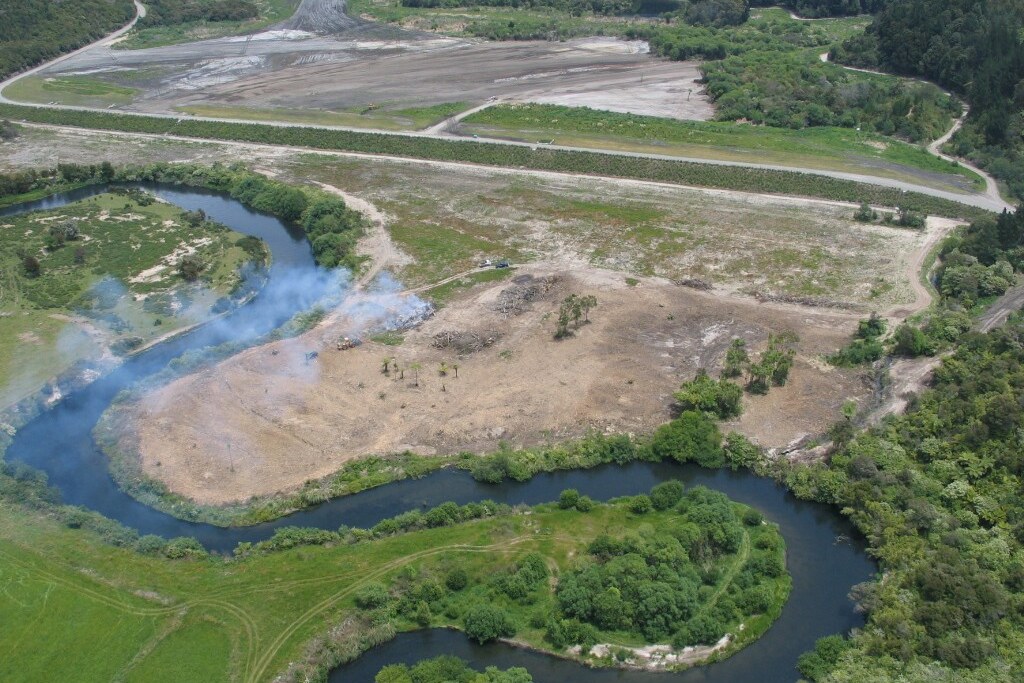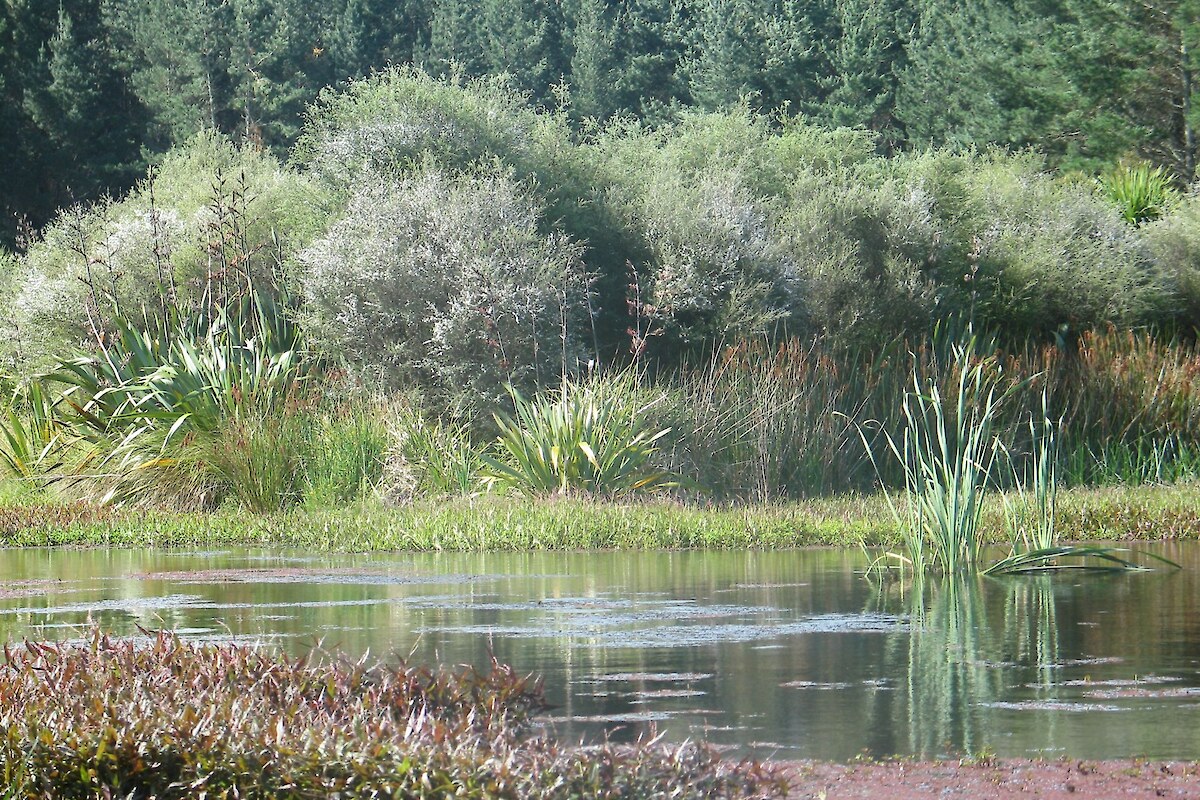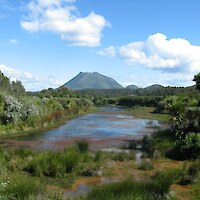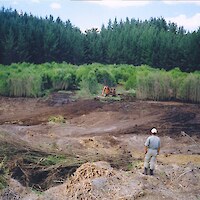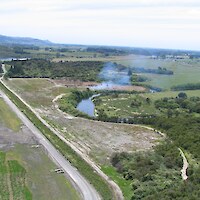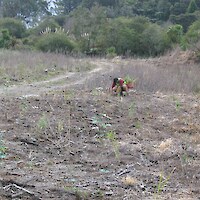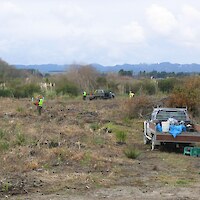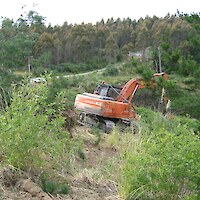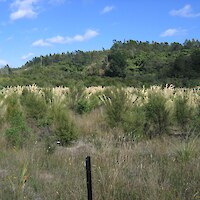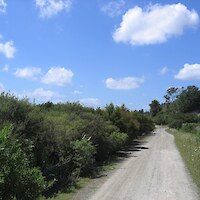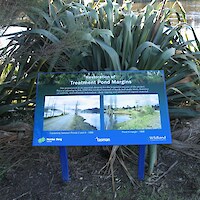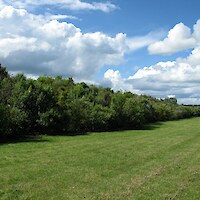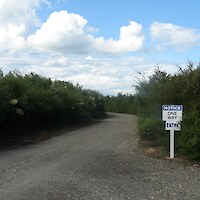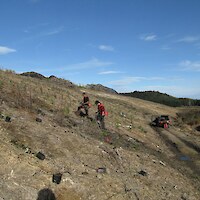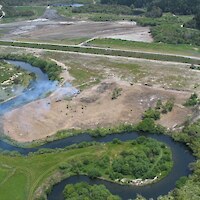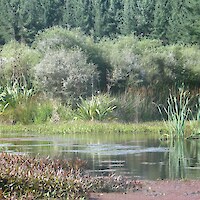Norske Skog Tasman has undertaken a major restoration project at the paper mill effluent treatment ponds near Kawerau. Wildland Consultants was involved in managing the project, including restoration planning, mapping, planting, weed and pest control, and monitoring.
The project began in 1998, and covers some 120 hectares.
The site was originally a natural wetland, Lake Rotoroa, with extensive wetlands on the lake margins. Prior to human arrival the surrounding hills were covered with podocarp/tawa forest but this was removed at an early stage following human settlement. A network of industrial treatment ponds had been constructed in the vicinity of the original lake, using a series of embankments. The development of roading, buildings, hard stands, and effluent treatment equipment resulted in major changes and the loss of most natural character from the site. Prior to the start of restoration works, remaining ecological values were associated with very degraded open water habitat rather than indigenous vegetation or vegetated wetlands.
The project vision was to restore a network of wetlands and contiguous margins, linked to other natural areas, that provide high quality habitats for indigenous plants and fauna, particularly water birds.
Wildland Consultants have undertaken the following components of the project:
- Assessing site characteristics and developing objectives for the project;
- Identifying requirements to achieve objectives;
- Preparation of a restoration and management plan;
- Excavation and mechanical clearance of willows;
- Site preparation - including chemical and hand clearance of weeds, mechanical preparation of substrate, and recontouring;
- Species selection, planning and management of planting operation, fertilising, and mortality monitoring;
- Establishment of plantings;
- Maintenance/after-care of plantings;
- GIS mapping to plan site preparation, planting operations and maintenance;
- Interpretation brochures and panels have been produced.
High quality formal reports have been prepared on different facets of the project, e.g. vegetation, soils, fauna, project progress. A comprehensive photographic record of the project has been maintained.
More than 230,000 indigenous seedlings have been planted, including a diverse range of more than 50 species of terrestrial and wetland plants. In some areas, indigenous species are now regenerating naturally.
In visual terms the site looks much better, and visitors have made many positive comments about the improvements. A very significant outcome to date is that the project has become a catalyst for other ecological restoration projects near Kawerau, including Lake Pupuwharau, Monika Lanham Reserve, Putauaki (Mt Edgecumbe), and Tarawera River margins.
The diversity of wildlife has increased following initial restoration works. Prior to works starting, 32 bird species were recorded at the site (22 indigenous). By 2006, more than 50 bird species (28 of them indigenous) had been recorded. New Zealand dabchick, a nationally threatened species, are now breeding in the wetlands, a site where they had not been recorded previously. Scaup have also re-established. The site is now of considerable importance in the Bay of Plenty Region for the diverse range of waterbirds it hosts.
In 2001 the project was recognised under the RAMSAR Convention with a national award from the Minister of Conservationfor the development and application of best practice in the conservation and wise use of wetlands. In 2000, the project also won the Industry/Business/Council section in the Environment BOP Environmental Awards Scheme.


